Learning to Champion for Your Learners: 2015 TESOL Advocacy and Policy Summit
In June, TESOL hosted its ninth annual 2015 TESOL Advocacy & Policy Summit in Washington, DC. Attendance at this year’s summit was the highest TESOL has ever seen with approximately 90 association members, affiliate members, and other TESOL professionals attending the program. While the majority of participants came from across the United States, several traveled internationally to attend as well. The event was sponsored, in part, by the American Federation of Teachers, College Board, and Corwin Press.
Structured with policy updates, advocacy techniques, and Capitol Hill visits, respectively, the program is designed to develop effective and confident champions for policies that support their ELLs. Over the course of 3 days, attendees are briefed on key education policies, learn advocacy skills, network with peers, and share their expert opinions with congressional leaders. By the end of this year’s event, TESOL advocates had visited the offices of more than 120 senators and representatives.
The policy portion of the program kicked off with a panel presentation from the U.S. Department of Justice Office of Civil Rights (OCR) on the rights of ELLs and immigrant students. This year marked the first time that the OCR has presented a panel at the summit. Representing OCR were Jim Ferg-Cadima and Marcel Quinones, who presented on schools’ legal obligations to ELLs and provided new tools and resources for teachers and administrators to ensure their programs are in compliance.
Dr. Libi Gil, Assistant Deputy Secretary and Director of the Office of English Language Acquisition (OELA) at the U.S. Department of Education, gave a keynote presentation that launched the second day of the event. Her presentation focused primarily on the value ELLs, the disparities that exist for them within the U.S. educational system, and the importance of advocating for these students. Dr. Gil asserted that ELLs are the responsibility of all educators and administrators, and that they shouldn't be put into a silo for the ESL teachers only. Moreover, she explained, they are national assets and investments—especially given the increasing demand for multilingual, culturally-competent global citizens.
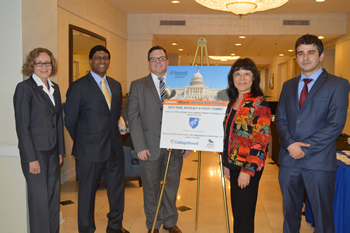
(L-R) TESOL Exec. Dir. Rosa Aronson, TESOL President Andy Curtis, John Segota, Libi Gil, Firdavs Navruzov
Following the keynote, participants engaged in a series of activities to help them learn more about advocacy and prepare them to meet with their members of Congress. To maximize the impact of the summit, participants were also encouraged to meet with key members of Congress serving on the education and appropriations committees, and participants from the same state were encouraged to meet with legislators in small groups.
To underscore the value of advocacy for ELLs, invited speaker and author of Advocating for English Learners: A Guide for Educators, Diane Staehr Fenner, encouraged advocates to think about where they can best affect change—whether on an individual, interpersonal, classroom, or district-wide level. The level of advocacy depends on the needs. She explained that English language advocacy is a gradual cycle through “I do, we do, you do” with the ultimate goal of empowering students.
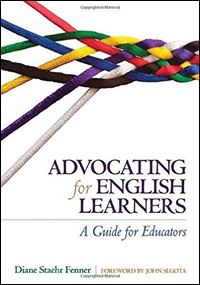
Corwin Press provided a free copy of Staehr Fenner’s book to each attendee
Other presentations on policy and advocacy included the American Federation of Teachers on ELLs and the Common Core State Standards, the Student & Exchange Visitor Program update from the U.S. Department of Homeland Security, an update on programs for adult ELLs from the Office of Career, Technical, and Adult Education, the National Education Association on advocacy for ELLs, and legislative overview from TESOL staff and Washington Partners, LLC.
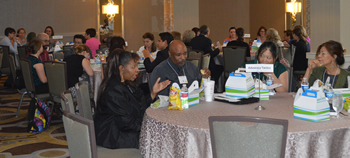
Lunchbox Networking Session
Attendees during the Box Lunch Networking where they were prompted to discuss a different topic surrounding advocacy at each tables
On Tuesday, the advocates went to Capitol Hill to meet with members of Congress and their staffers. After their meetings, the advocates shared their experiences.
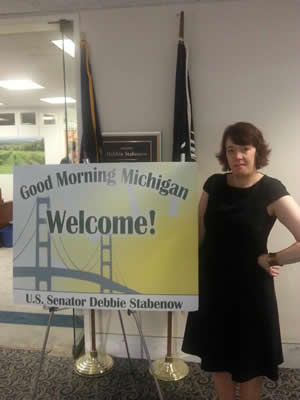
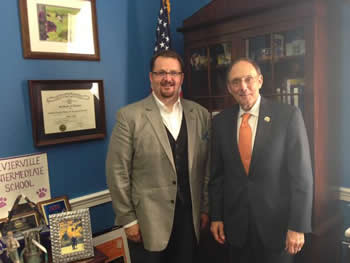
Using the hashtag #TESOLadv15, advocates were able to live tweet and Instagram their visits: (TOP) Colleen Brice Affiliate Rep for MITESOL visiting US Senator Debbie Stabenow. (BOTTOM) TN TESOL Affiliate Rep and first time attendee Byron Booker and Rep. Phil Roe (R-TN) the Chair of the House Education and Workforce Committee
Katherine Carr said,
I learned about how accessible the democratic process is. It was surprising to me how easy it was to set up a meeting and to have someone listen to my concerns. This conference really left me with a positive impression of our political system, and although I often feel invisible as an ESL educator, this conference made me feel seen.
First time attendee Rosetta Coyne shared,
As an advocate for my students, I know that the heart of positive change begins with real dialogue. The opportunity to present real issues directly to our representatives and senators at the Capitol planted the seeds for better written policies that will provide realistic pathways for undocumented adults and children pursuing citizenship. My passion for advocacy was supported by the information provided at the Summit.
For more highlights from the event, and resources, take a look at the 2015 TESOL Advocacy and Policy summary page.
*Editor's Note: The published version of this article in the original e-mail edition of TESOL Connections attributed this to the incorrect author. The article was written by TESOL staff.
TESOL Blogs
Interested in writing a blog for TESOL?
Contact
Tomiko Breland with your idea or for submission details.
Check out the latest TESOL Blogs:
|
Connectivity With Google’s Cultural Institute, by Kristen Lindahl
 One of the greatest benefits of being online is the global connectivity it brings—connection to other people, other places, other perspectives, and, of course, other languages. Language teachers have been long aware of the connection between language learning and cultural ties, and are often very creative in bringing culture into the classroom and creating experiences for students outside of it, as well. One of the greatest benefits of being online is the global connectivity it brings—connection to other people, other places, other perspectives, and, of course, other languages. Language teachers have been long aware of the connection between language learning and cultural ties, and are often very creative in bringing culture into the classroom and creating experiences for students outside of it, as well.
A current tool that TESOL educators might find intriguing for these purposes is Google Cultural Institute, which has brought Google’s unique technology to the world’s art galleries and museums. Read More. |
|
Discussing Same-Sex Marriage in ELT: A Survey Approach, by Alexandra Lowe
 One of my goals as an instructor in an intensive English program (IEP) has been to encourage my students to pay more attention to the news in the United States. (See “Producing Newscasts for the ESL Classroom“) When students watch the news in English, they strengthen their listening skills, expand their vocabulary, and increase their awareness of American culture. One of my goals as an instructor in an intensive English program (IEP) has been to encourage my students to pay more attention to the news in the United States. (See “Producing Newscasts for the ESL Classroom“) When students watch the news in English, they strengthen their listening skills, expand their vocabulary, and increase their awareness of American culture.
The U.S. Supreme Court’s 26 June 2015 ruling on same-sex marriage was one of several “hot topics” in the news this summer that we tackled in class. Beforehand, I wrestled with the question of how best to approach this issue in a class where I knew that a number of students, because of their religious beliefs, might disagree with the Supreme Court’s decision. Read More. |
|
Controversy in Adult Conversation, by Robert Sheppard
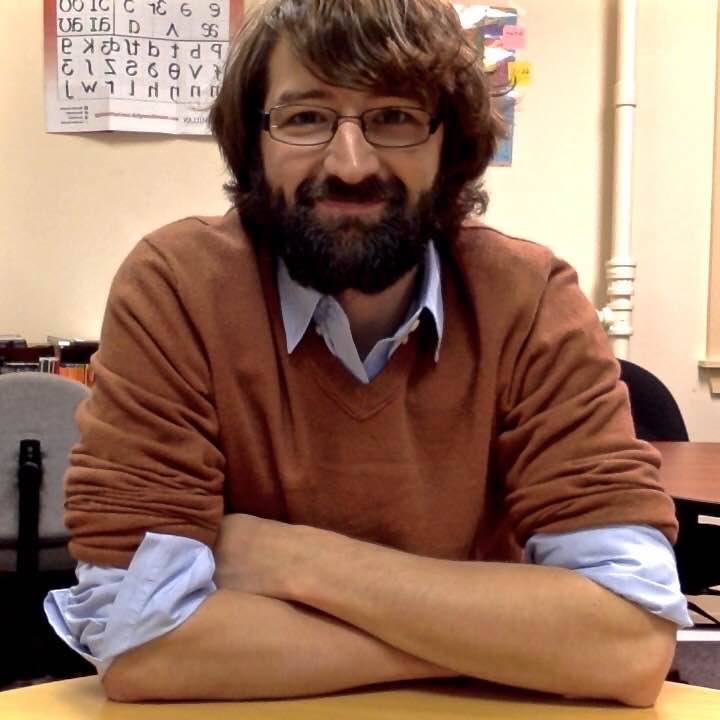 A lot of teachers I’ve spoken with completely avoid contentious topics in their classroom. Of course, the intentions are good: to create an inclusive, congenial atmosphere. And in a world where the language of trigger warnings and safe spaces is spreading rapidly across our higher ed campuses, teachers may feel even more reluctance to introduce any sort of controversy into their classroom. A lot of teachers I’ve spoken with completely avoid contentious topics in their classroom. Of course, the intentions are good: to create an inclusive, congenial atmosphere. And in a world where the language of trigger warnings and safe spaces is spreading rapidly across our higher ed campuses, teachers may feel even more reluctance to introduce any sort of controversy into their classroom.
But at what cost do we excise all disagreement? And does disagreement have to threaten the safe space of the classroom? Read More. |
|
House Wheat This Hound!: The Problem of Listening, by Karen Taylor de Caballero
 If you’re baffled by the title, don’t fret: “House Wheat This Hound!” means nothing in its printed form. When said out loud, however, a listener can find meaning: How sweet the sound! If you’re baffled by the title, don’t fret: “House Wheat This Hound!” means nothing in its printed form. When said out loud, however, a listener can find meaning: How sweet the sound!
Here’s what’s interesting: the listener must be a different person, someone who is not looking at the text. Perhaps that’s why we find “mad gabs” like this one so compelling: Even when we know what we’re supposed to hear, our eyes continue to interfere with our ears, and we are fascinated. Read More. |